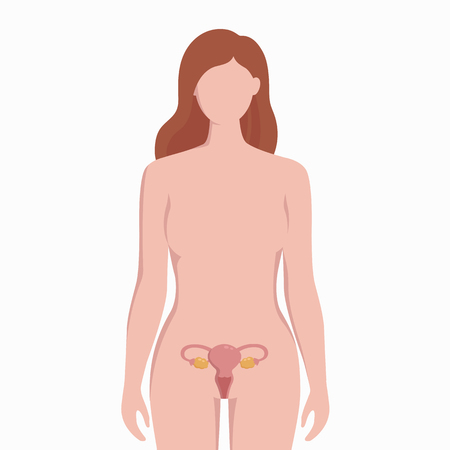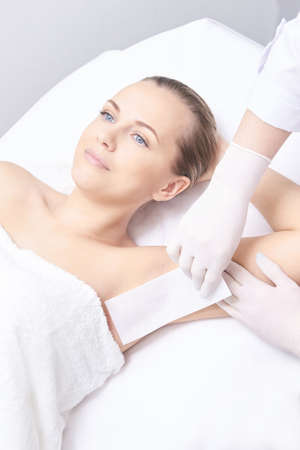Understanding Collagen and Its Role in Skin Ageing
Collagen is a vital protein that forms the structural foundation of our skin, giving it strength, resilience, and elasticity. Acting as a supportive meshwork within the dermis, collagen keeps youthful skin looking firm, smooth, and plump. However, as we age, particularly in the UK’s often variable climate and with lifestyle factors such as stress or pollution, natural collagen production begins to decline. This reduction typically starts from our mid-twenties and accelerates in later decades, leading to visible signs of ageing—such as fine lines, wrinkles, and sagging skin.
The loss of collagen is influenced by both intrinsic factors like genetics and the natural ageing process, as well as extrinsic factors common in British life, including exposure to UV rays (even on cloudy days), smoking, poor diet, and environmental pollutants found in urban areas. Combined with colder temperatures that can leave skin dehydrated, these elements contribute to the steady depletion of collagen stores over time. Understanding how collagen functions and what causes its breakdown is essential for anyone considering ways to rejuvenate their appearance and maintain healthy-looking skin as they age in the UK.
2. The Science Behind Collagen Stimulation
Collagen is a fundamental protein in our skin, providing structural support, elasticity, and firmness. As we age, the natural synthesis of collagen diminishes, leading to visible signs of ageing such as wrinkles, sagging, and loss of volume. Understanding the science behind collagen stimulation is crucial for those in the UK seeking effective rejuvenation treatments.
How Collagen Synthesis Works
Collagen production primarily occurs within the dermis layer of the skin. Specialised cells known as fibroblasts are responsible for synthesising new collagen fibres. The process begins when fibroblasts receive signals—often triggered by micro-injuries or specific skincare ingredients—to produce procollagen. This precursor molecule undergoes enzymatic modifications to form mature collagen fibrils, which then interlace to provide tensile strength and resilience.
Key Biological Processes Involved
| Process | Description |
|---|---|
| Fibroblast Activation | Cells are stimulated by growth factors and cytokines to initiate collagen synthesis. |
| Procollagen Formation | A precursor to collagen, formed inside fibroblasts before being secreted into the extracellular matrix. |
| Enzymatic Cleavage | Specific enzymes convert procollagen into mature collagen outside the cell. |
| Cross-Linking | Mature collagen fibres are stabilised through cross-linking, enhancing skin strength and integrity. |
Factors Influencing Collagen Production in the Skin
The rate and quality of collagen synthesis can be affected by several internal and external factors. Ageing naturally reduces fibroblast activity, while environmental stressors such as UV exposure and pollution accelerate collagen breakdown. Additionally, lifestyle choices commonly discussed in British wellness circles—including diet, smoking habits, and alcohol consumption—can impact overall collagen levels.
| Factor | Impact on Collagen Synthesis | UK Context Example |
|---|---|---|
| UV Exposure | Degrades existing collagen and inhibits new formation. | Lack of daily SPF use during rare sunny spells accelerates skin ageing. |
| Nutritional Intake | Amino acids, vitamin C, and antioxidants promote healthy synthesis. | A balanced diet with plenty of fruits and vegetables supports skin health. |
| Lifestyle Habits | Smoking and excessive alcohol can inhibit fibroblast function. | Binge drinking or smoking may undermine the benefits of skincare treatments. |
| Hormonal Changes | Oestrogen decline post-menopause slows down production rates. | Many women notice increased skin laxity after menopause. |
The Importance of Targeted Interventions in the UK Climate
The typically cool and damp British climate offers some protection against photoageing compared to sunnier regions; however, central heating during winter months can dry out skin, compounding age-related changes. Therefore, tailored interventions that actively stimulate collagen—such as microneedling, laser treatments, or topical retinoids—are essential for maintaining youthful-looking skin across Britain’s diverse environments.

3. Modern Techniques for Collagen Stimulation
Across the UK, the demand for effective, non-surgical skin rejuvenation has led to the rise of advanced techniques designed specifically to stimulate collagen production. These methods harness scientific innovation and clinical expertise, making them increasingly popular in aesthetic clinics from London to Edinburgh.
Microneedling: Controlled Precision for Natural Renewal
Microneedling, also known as collagen induction therapy, is one of the most sought-after treatments in British clinics. The procedure involves creating micro-injuries in the skin using fine needles, which trigger the body’s natural healing response and stimulate the production of new collagen and elastin fibres. This technique is celebrated for its versatility—it can address fine lines, acne scars, and overall skin texture without significant downtime. In the UK, practitioners often combine microneedling with topical serums or PRP (platelet-rich plasma) for enhanced results.
Laser Therapies: Harnessing Light Energy
Laser-based treatments, including fractional laser resurfacing and non-ablative lasers, are another cornerstone of collagen stimulation. These technologies use targeted light energy to create controlled thermal injury beneath the surface of the skin. This process promotes collagen remodelling while minimising damage to surrounding tissues. British clinics favour devices such as Fraxel and ClearLift due to their ability to deliver noticeable improvement with minimal recovery time—an important consideration for busy UK lifestyles.
Injectables: Biostimulators Beyond Fillers
While traditional dermal fillers provide immediate volume, a new generation of injectables—known as biostimulators—work by encouraging the body’s own collagen synthesis over several months. Products like Sculptra and Radiesse have gained traction in UK aesthetics for their subtle yet long-lasting rejuvenation effects. These treatments are particularly valued by patients seeking gradual improvement without dramatic change, aligning well with British preferences for natural-looking results.
A Personalised Approach in UK Clinics
The hallmark of modern collagen stimulation in the UK is personalisation. Aesthetic practitioners tailor treatment plans based on each client’s unique skin type, age, and desired outcomes. Combination therapies—for example, pairing microneedling with laser or injectables—are common practice to maximise collagen regeneration and optimise results while maintaining safety and comfort.
Safety and Regulation
The UK’s stringent regulatory environment ensures that these procedures are performed by qualified professionals adhering to high safety standards. This commitment gives patients peace of mind when pursuing advanced collagen stimulation techniques at reputable clinics nationwide.
4. Benefits of Enhanced Collagen Production
When it comes to skin rejuvenation, the benefits of stimulating collagen production are both visible and structural—offering British patients tangible improvements that go beyond surface-level aesthetics. As we age, natural collagen levels decline, resulting in a loss of firmness, increased fine lines, and diminished radiance. Modern collagen stimulation therapies, however, provide a scientifically-backed solution to these concerns.
Visible Improvements: What British Patients Notice
Enhanced collagen production leads to noticeable changes in skin texture and appearance. Many UK patients report a reduction in wrinkles, a more even skin tone, and an overall youthful glow following treatment. These effects are particularly valued in Britain, where subtle enhancement rather than dramatic alteration is often preferred.
| Improvement | Typical Onset | Common Patient Feedback |
|---|---|---|
| Smoother Skin Texture | 4-8 weeks post-treatment | “My skin feels fresher and softer.” |
| Reduction in Fine Lines | 6-12 weeks | “Lines around my eyes look less pronounced.” |
| Improved Elasticity | 8-16 weeks | “Theres a noticeable lift to my cheeks.” |
| Brighter Complexion | 4-6 weeks | “I look less tired; my skin has a healthy glow.” |
Structural Enhancements: Beyond the Surface
The science behind collagen stimulation also reveals long-term structural benefits. Increased collagen density within the dermis fortifies the skin’s support network, making it more resilient against environmental stressors common in the UK climate—such as wind, cold, and fluctuating humidity. This strengthened framework results in firmer, plumper skin that maintains its youthful contours over time.
Real-Life Outcomes Amongst British Patients
British clinics frequently observe positive outcomes from collagen-based treatments such as microneedling, injectable stimulators, or advanced laser procedures. Patients often experience not only cosmetic improvement but also enhanced confidence in their appearance. The understated yet effective nature of these results aligns well with the British aesthetic preference for natural-looking rejuvenation.
Summary Table: Key Benefits Experienced by UK Patients
| Benefit Area | Description | Patient Satisfaction Level* |
|---|---|---|
| Wrinkle Softening | Smoother appearance around eyes & mouth | High |
| Tightening Effect | Lifting of jawline & cheeks without surgery | Moderate to High |
| Radiance Restoration | Youthful glow despite seasonal dullness typical in the UK | High |
| Natural-Looking Results | No “overdone” effect; discreet enhancement admired in British culture | Very High |
*Based on patient-reported outcomes from leading UK clinics.
5. Cultural Attitudes towards Ageing and Skin Rejuvenation in the UK
Ageing is perceived in a distinctly nuanced manner within British culture, blending respect for maturity with a subtle desire to maintain vitality. In the UK, there remains an enduring appreciation for authenticity and natural beauty, which directly influences attitudes towards both ageing and cosmetic interventions. Traditionally, visible signs of ageing such as fine lines and wrinkles are viewed as markers of life experience rather than flaws to be erased. However, evolving societal norms and greater awareness of skin health have led to a growing acceptance of aesthetic treatments, provided they deliver understated and refined results.
The British preference leans strongly towards subtlety; dramatic transformations are often met with scepticism, whereas discreet enhancement—such as those achieved through collagen stimulation—is increasingly sought after. This cultural tendency is reflected in the rising popularity of non-invasive or minimally invasive procedures that promote gradual improvements without obvious changes to facial identity. As public discourse becomes more open regarding self-care and wellness, there is less stigma attached to seeking professional help for skin rejuvenation, especially when treatments focus on supporting natural processes like collagen production.
Moreover, the demand for natural-looking results has driven innovation in the aesthetics industry across the UK. Treatments such as microneedling, radiofrequency therapy, and injectable collagen stimulators are embraced for their ability to refresh appearance while preserving individuality. British clients typically prioritise safety, clinical evidence, and practitioner expertise, favouring approaches grounded in scientific research over fleeting trends. In summary, while respect for age endures, a modern British perspective now balances this tradition with a pragmatic approach to ageing gracefully—embracing science-backed methods that restore skin health and resilience while maintaining an authentic look.
6. Pre- and Post-Treatment Care: Best Practices in the UK
Preparing for and recovering from collagen stimulation treatments requires a thoughtful approach, particularly when considering the unique climate, lifestyle, and skincare habits prevalent across the UK. Here’s a professional guide to optimising your results while safeguarding your skin’s health.
Pre-Treatment Preparation
Prior to undergoing any collagen stimulation procedure—be it microneedling, radiofrequency, or injectable stimulators—it is crucial to prep your skin properly. In the UK, where the weather can fluctuate between damp cold and periods of unexpected sun exposure, patients should avoid active skincare ingredients such as retinoids and acids for at least one week before treatment. This helps minimise irritation or sensitivity. Additionally, if you use products containing vitamin C or other antioxidants, these can be beneficial to fortify the skin’s barrier prior to your appointment.
Sun Protection Considerations
Despite the UK’s often overcast skies, ultraviolet (UV) rays can still affect your skin year-round. It is strongly advised to apply a broad-spectrum SPF 30+ daily in the days leading up to your procedure. This precaution reduces the risk of post-treatment pigmentation changes, especially in individuals with lighter complexions common in Britain.
Aftercare Essentials
The immediate post-procedure period is critical for optimal collagen production and healing. Patients are encouraged to keep their skin hydrated using gentle, fragrance-free moisturisers that suit their skin type and local water hardness—hard water being common in many UK regions may require richer emollients. Avoid makeup for at least 24 hours post-treatment and refrain from using active ingredients until your practitioner advises it is safe to resume them.
Weather-Specific Advice
UK weather is often cool and humid, which can be beneficial for healing; however, exposure to wind and rain should be minimised immediately after treatment to prevent irritation. During rare hot spells or holidays abroad, increased sweating can introduce bacteria to treated areas—so always keep the skin clean and avoid swimming pools or saunas for several days.
Lifestyle Adaptations
As British lifestyles often involve commuting via public transport and exposure to pollution in urban centres like London or Manchester, cleansing your face thoroughly but gently each evening is paramount. Incorporating antioxidant serums once healing allows can further protect against environmental stressors that might impair collagen synthesis.
Long-Term Maintenance
Your practitioner may recommend a series of treatments spaced several weeks apart for best results, followed by annual maintenance sessions. Adhering closely to pre- and post-care protocols ensures your investment in rejuvenation continues to yield visible, lasting results despite the challenges posed by the UK environment and busy modern living.
7. Safety, Regulations, and Choosing a Practitioner in the UK
When considering collagen stimulation treatments to rejuvenate ageing skin, understanding the specific safety standards and regulatory frameworks in the UK is paramount. The aesthetics industry here is tightly governed to protect patient wellbeing and ensure high-quality outcomes.
UK-Specific Safety Guidelines
The UK has established clear safety protocols for non-surgical cosmetic procedures, including those involving collagen stimulation such as microneedling, laser therapies, and injectable biostimulators. Treatments should always be performed in a clinical environment that adheres to strict hygiene and infection control standards. Practitioners are expected to conduct thorough consultations, discuss medical history, and outline potential risks or side effects before proceeding with any intervention.
Understanding UK Regulations
Regulation of aesthetic treatments in the UK is overseen by bodies such as the Care Quality Commission (CQC) for clinics offering regulated activities and the General Medical Council (GMC) for registered medical practitioners. Additionally, professional organisations like the British Association of Dermatologists (BAD) and the British College of Aesthetic Medicine (BCAM) provide guidance on best practices. From 2022 onwards, tighter legislation around injectables and laser devices means only qualified professionals can offer certain procedures, ensuring enhanced patient protection.
Selecting Qualified Practitioners
To achieve optimal results and minimise risks, it is crucial to choose a practitioner who is fully qualified, insured, and experienced in collagen stimulation techniques. Verify their credentials—look for registration with relevant professional bodies such as BCAM or BAD. Reputable clinics will be transparent about their practitioners’ qualifications and training. Don’t hesitate to request evidence of certification or ask about their experience with specific treatments you are considering.
When booking a consultation, ensure you feel comfortable with both the practitioner’s expertise and communication style. A reputable provider will prioritise your safety, answer all your questions comprehensively, and tailor a treatment plan based on your individual skin needs. By adhering to UK-specific safety regulations and choosing certified practitioners, patients can confidently pursue collagen stimulation therapies knowing they are in safe hands.


